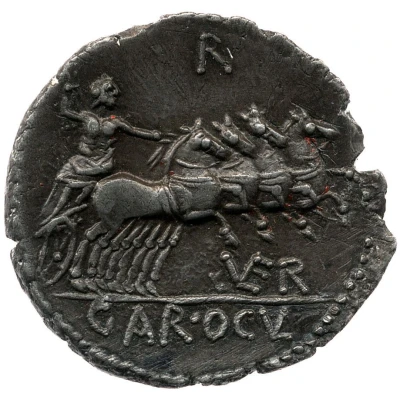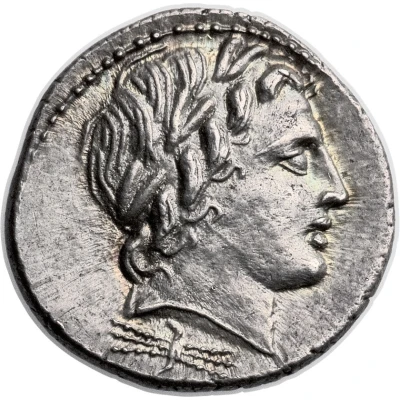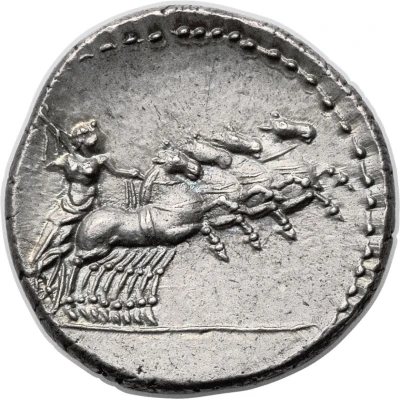


© British Museum
Denarius Gargilius, Oguinius and Vergilius; GAR OGVL VER 86 BC
86 BC year| Silver | 3.4 g | 18 mm |
| Issuer | Rome › Roman Republic (509 BC - 27 BC) |
|---|---|
| Period | Republic (509 BC - 27 BC) |
| Type | Standard circulation coin |
| Year | 86 BC |
| Value | Denarius (1) |
| Currency | Denarius of 16 Asses (141 – 27 BC) |
| Composition | Silver |
| Weight | 3.4 g |
| Diameter | 18 mm |
| Shape | Round (irregular) |
| Technique | Hammered |
| Orientation | Variable alignment ↺ |
| Demonetized | Yes |
| Updated | 2024-10-06 |
| Numista | N#372141 |
|---|---|
| Rarity index | 97% |
Reverse
Jupiter in quadriga right, holding reins and hurling thunderbolt; letter above (control mark); legend below and in exergue.
Script: Latin
Lettering:
GAR
OCVL. VER.
Comment
RRC 350A/1a; CRR 721
@Bibliothèque nationale de France
RRC 350A/1b; CRR 721a
@British Museum
RRC 350A/1c; CRR 721b
@British Museum
RRC 350A/1d; CRR 721c
@Bibliothèque nationale de France
RRC 350A/1e; CRR 721d
@British Museum
Interesting fact
One interesting fact about this coin is that it features a rare combination of three moneyers, Gargilius, Oguinius, and Vergilius, whose names appear on the coin in a unique arrangement, with Gargilius' name appearing twice. This has led some numismatists to speculate that the coin may have been issued to commemorate a specific event or occasion, such as a political alliance or a military victory. Additionally, the coin's design, which includes a depiction of a bust of the Roman goddess Libertas on the obverse and a representation of the Roman goddess Ceres on the reverse, may also hold symbolic significance and offer a glimpse into the political and cultural values of the Roman Republic during this time period.










![Denarius Memmia: Lucius [and] Gaius Memmius Gallus; EX•S•C / L•C•MEMIES•L•F GAL 87 BC front](/storage/images/Denarius-Memmia-Lucius-and-Gaius-Memmius-Gallus-EXSC--LCMEMIESLF-GAL_66754_1.webp)
![Denarius Memmia: Lucius [and] Gaius Memmius Gallus; EX•S•C / L•C•MEMIES•L•F GAL 87 BC back](/storage/images/Denarius-Memmia-Lucius-and-Gaius-Memmius-Gallus-EXSC--LCMEMIESLF-GAL_66754_2.webp)

